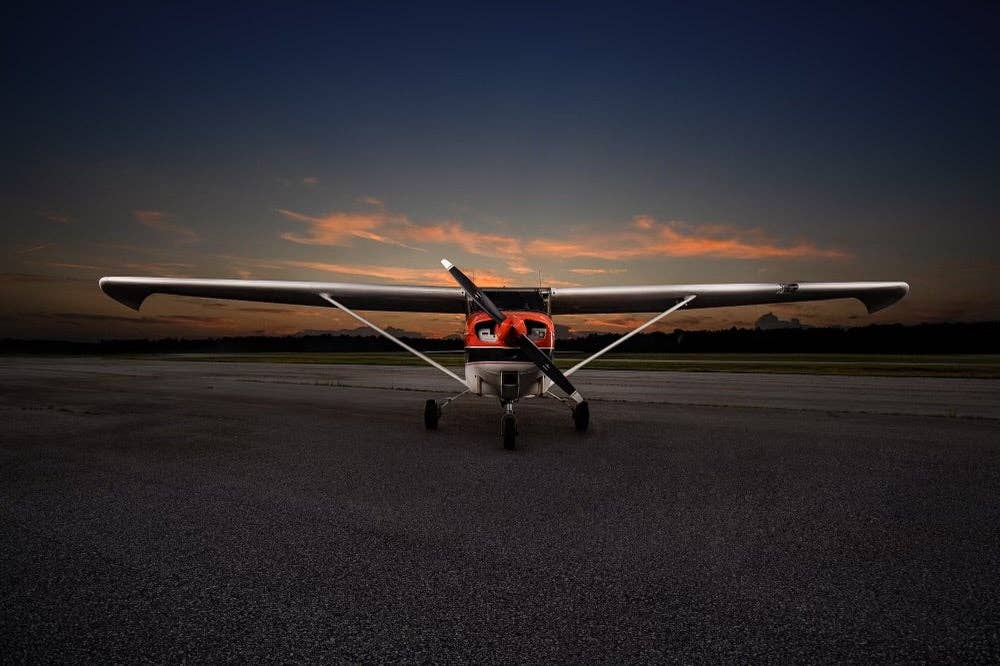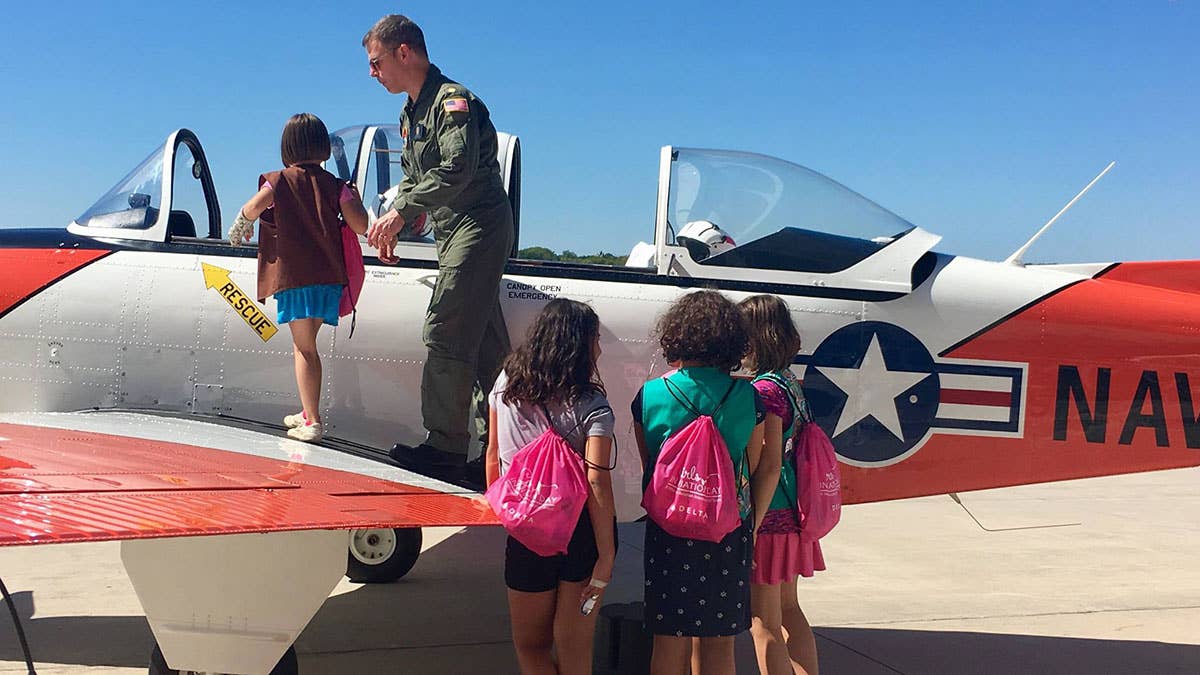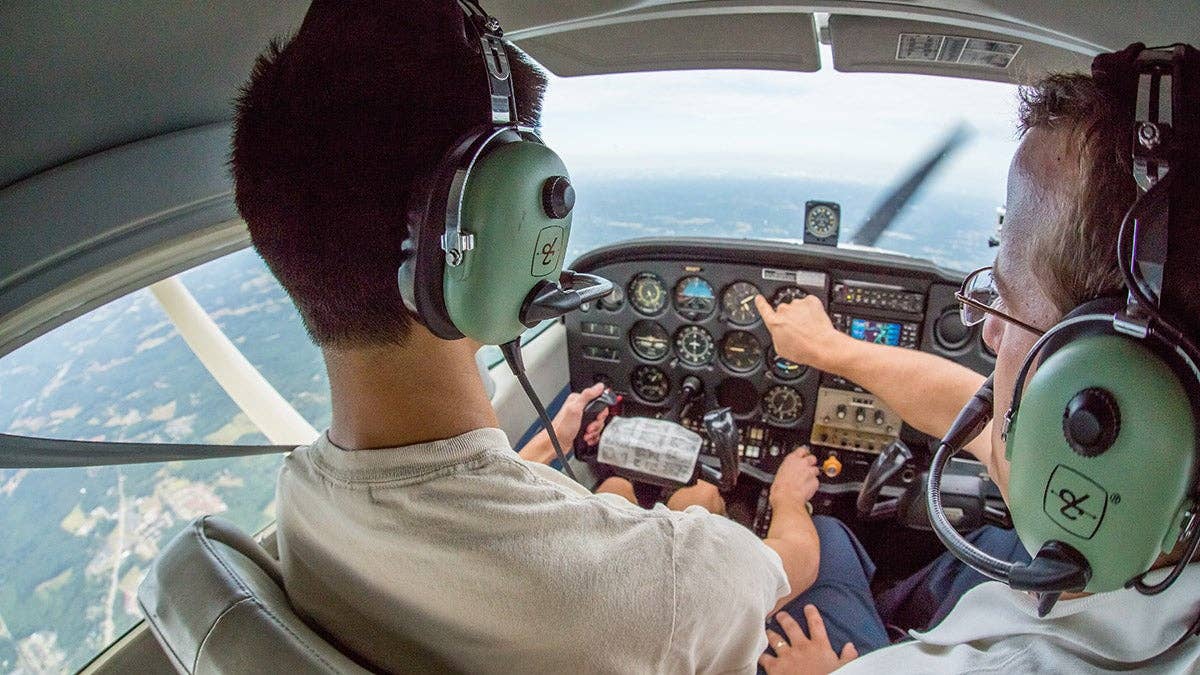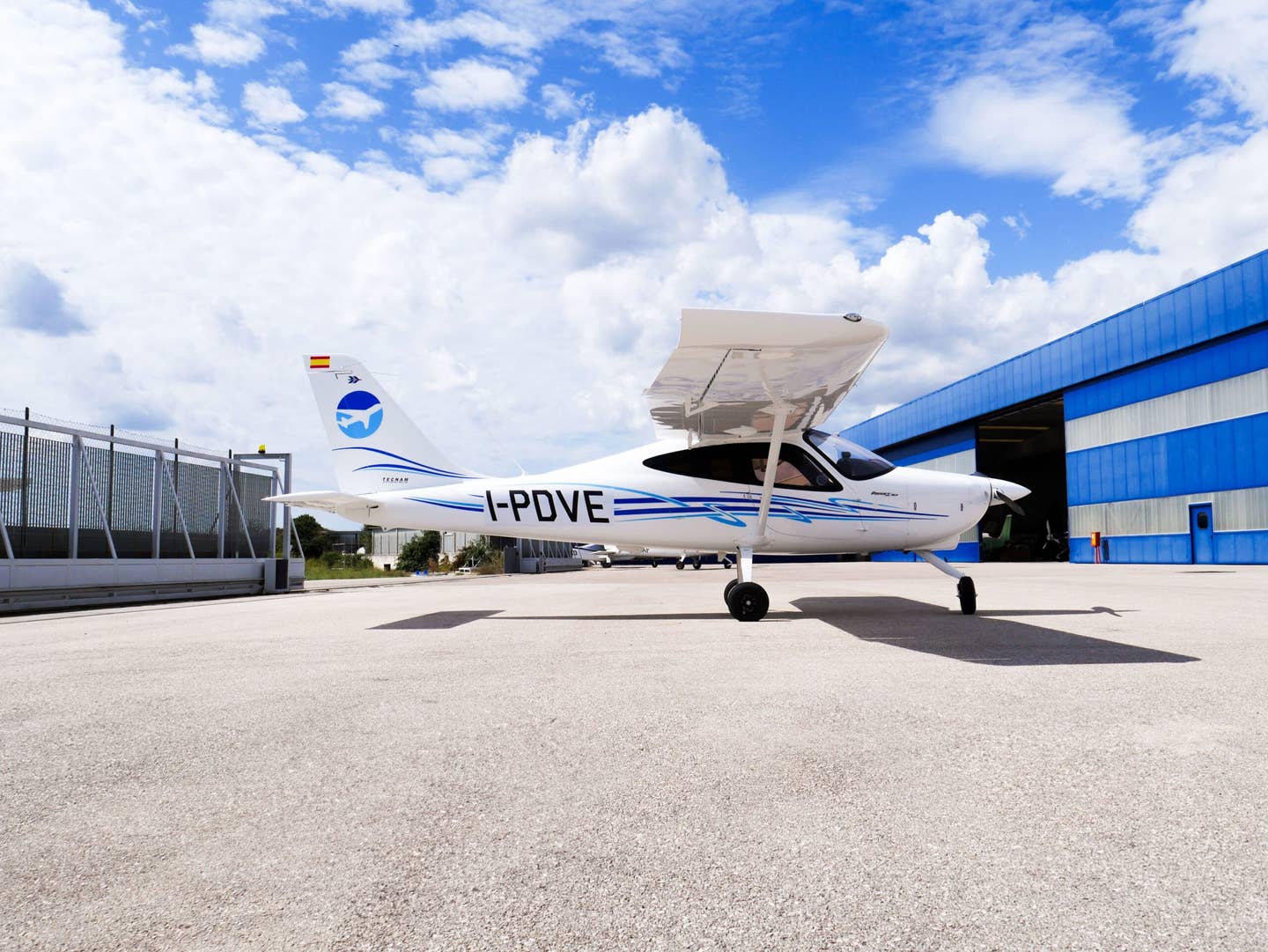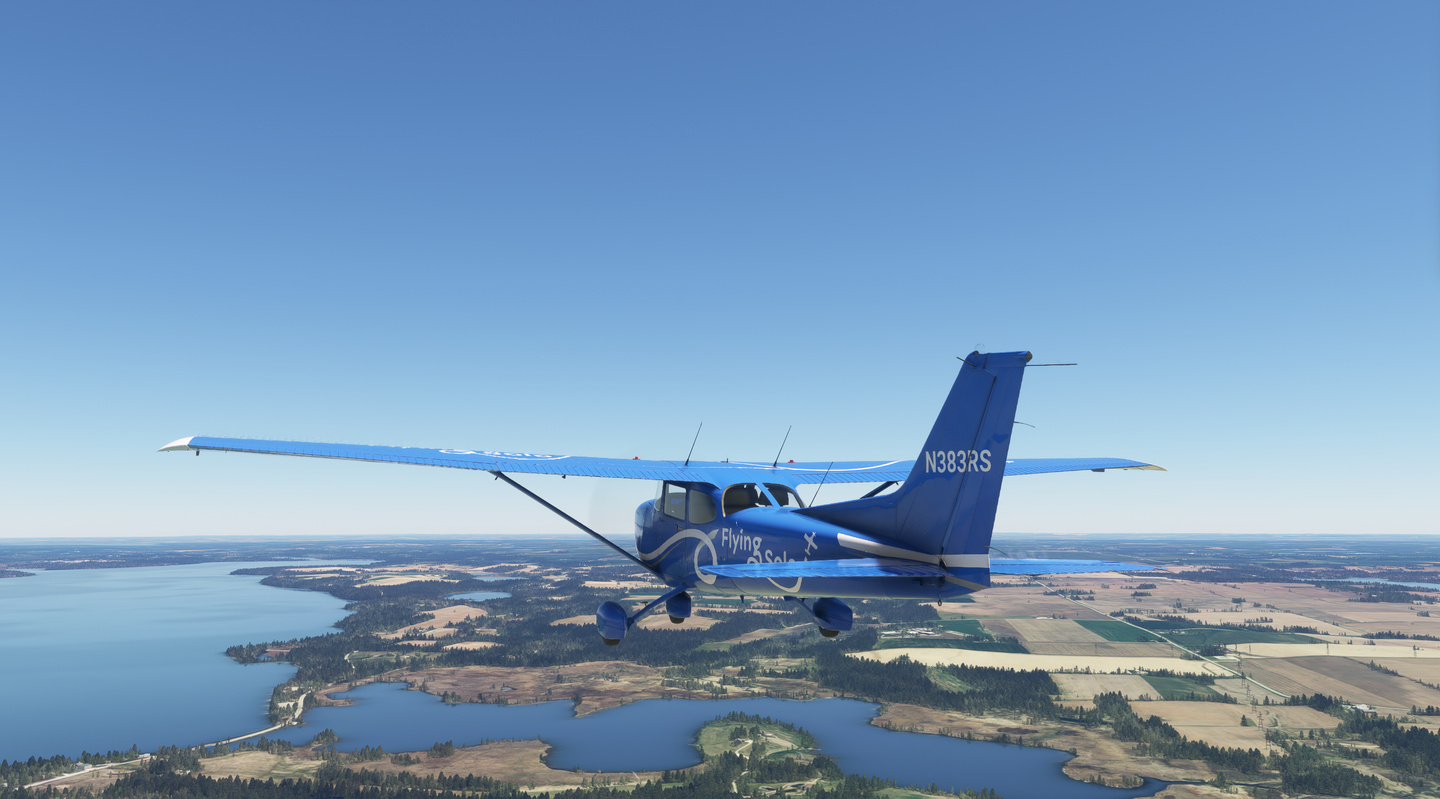The Family That Flies Together
Nicole Robbins is a third-generation pilot balancing flight training with building a family.
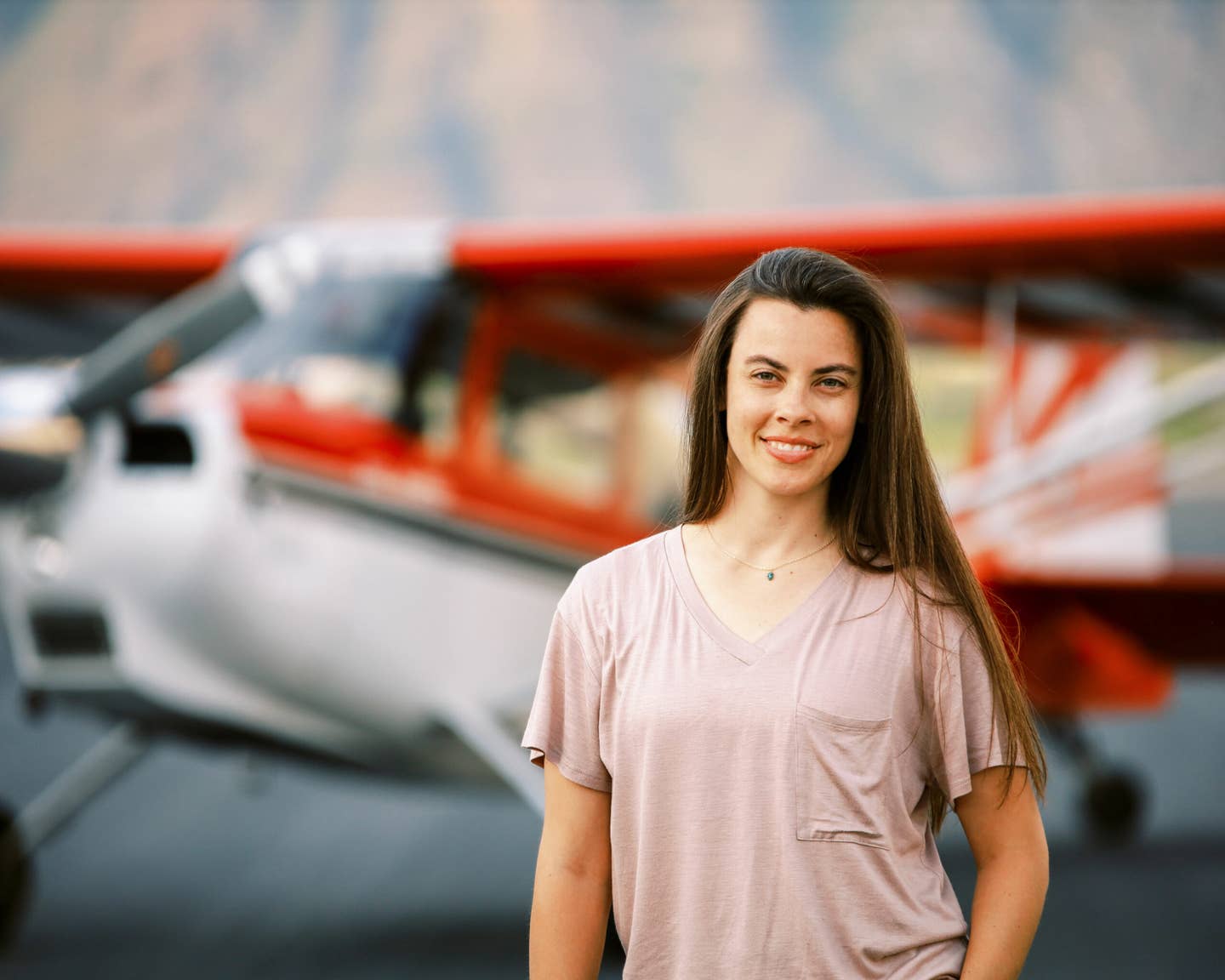
Nicole Stoddard Robbins is learning to fly in her father’s Super Decathlon. [Credit: Chloe Martin]
The aviation community can sometimes feel like one big extended family. For Nicole Stoddard Robbins, an IFR-rated private pilot and mother of three boys in Utah, that’s more true than it is for many. Robbins is a third-generation pilot whose grandfather served in the U.S. Army Air Corps (now the U.S. Air Force) during World War II, and in Korea and Vietnam. Her dad, Kris Stoddard—who flew for United when Robbins was a kid—is her flight instructor.
Her dad wanted to follow in his father’s footsteps and fly for the USAF, but his eyesight was not quite 20/20. So he took an airline job, retiring early after 13 years and earning a master’s degree in social work. He works as a counselor and a Part 135 pilot.
About eight years ago, Robbins said, her dad bought an airplane and offered to teach his children to fly. That’s when she first got the flying bug. “It’s funny because growing up, I never thought I wanted to fly airplanes,” she recalled. “I didn’t think of it as an option as a kid.”
Growing up, she thought of being a mom as a career option: all of the daily work associated with that, like preparing meals, pickups, and drop-offs. “But after having two kids, I could feel my brain turning to mush,” she said with a laugh. Being a person doesn’t end with motherhood, she pointed out. “I’m still Nicole. I wanted to be mentally challenged.” That’s roughly when her dad bought his airplane and offered her flying lessons.
And he didn’t come home with a typical trainer—Robbins learned to fly in her father’s American Champion Super Decathlon. “I’m kind of blown away that that was the airplane I started on,” she said.
More Right Rudder
The flight instructor mantra, “More right rudder,” is even more critical in a Super Decathlon than in the relatively docile Cessna 172. While you may not need as much rudder input for tricycle-gear aircraft, a conventional-gear airplane is less forgiving, particularly on the ground. “I think I veered off the side at least three times,” Robbins said of her early attempts to taxi to the departure end of the runway.
Luckily she had a patient flight instructor whose experience as a counselor may have informed his teaching style. Robbins described being overwhelmed the first time she tried to do towered radio communications, sitting on the ramp so frustrated she couldn’t get anything out. Her dad recognized that she needed a break, smoothly took over, and they flew home to debrief, decompress—and try again later.
Since that day, she said she has been on top of radio communications, even fielding compliments from other pilots. Backing up and building skills incrementally made a difference. “He takes personal cues,” Robbins said of their relationship in the cockpit. “It’s interesting having my CFI be a counselor. He’s my dad, and I won’t always agree with him on everything. But I love him and appreciate everything he puts me through.”
When she flew her first solo, Robbins says she was pregnant with her third child. “And then I was so sick,” she said. She had to take medication to prevent vomiting, so she put flying on hold temporarily. It’s worth noting that not all pregnancies require prescription medication for sickness, and many women are able to use bracelets and ginger candy to keep mild morning sickness at bay and keep flying. After earning her private pilot certificate, Robbins took a break from training for a couple of years before beginning to work on her instrument rating.
And she makes time to have fun and cultivate her family bonds. The entire family piled into a Beechcraft King Air for a trip to visit the redwoods last summer. Meal time in her household is “sacred,” but that doesn’t mean every meal is home-cooked. The important aspect of the time is talking in a meaningful way. She and her husband take turns taking their kids on outings, asking them about their friendships and school. And that’s what it means to be a mom—not the tasks we often associate with motherhood, she says.
“All of those chores, patching holes in the knees of long pants, and picking up and dropping off—that’s not what makes you a mom,” she said. “It’s all about the relationship you have with your kids, and how you show up for your kids. You can still follow your own dreams.”
Now, Robbins is working on a commercial rating. She’s currently studying for her knowledge exam and has completed most of the flying requirements. She’s saving the last 20 or so hours until after her exam, so she can practice maneuvers for the check ride. She’s looking ahead to working on a multiengine rating, and is considering enrolling in an accelerated program. Robbins said she’d love to be able to fly with her dad in the Cessna Citation XLS, which will require 800 hours for insurance purposes.
Looking Ahead to Part 135
Robbins says she’s worked with her dad at his Part 135 company, cleaning airplanes and doing bookwork. It’s her dream to get to fly professionally with him before he retires. And eventually, she thinks she’d be interested in flying for an airline—but not until her boys are a little older. Right now, they are 10, seven, and four.
“My career is still second,” she emphasized. “I have a different career timeline compared to other pilots...But I’m not pressured to finish. My husband has a great job, which is a great blessing for me—I don’t have to rush through things while trying to figure out finances. I can pace myself to take on as little or as much as I need to, to still be there for my kids. That’s probably one of the most important things. And it’s incredible that in aviation, you can do that.”

Subscribe to Our Newsletter
Get the latest FLYING stories delivered directly to your inbox

